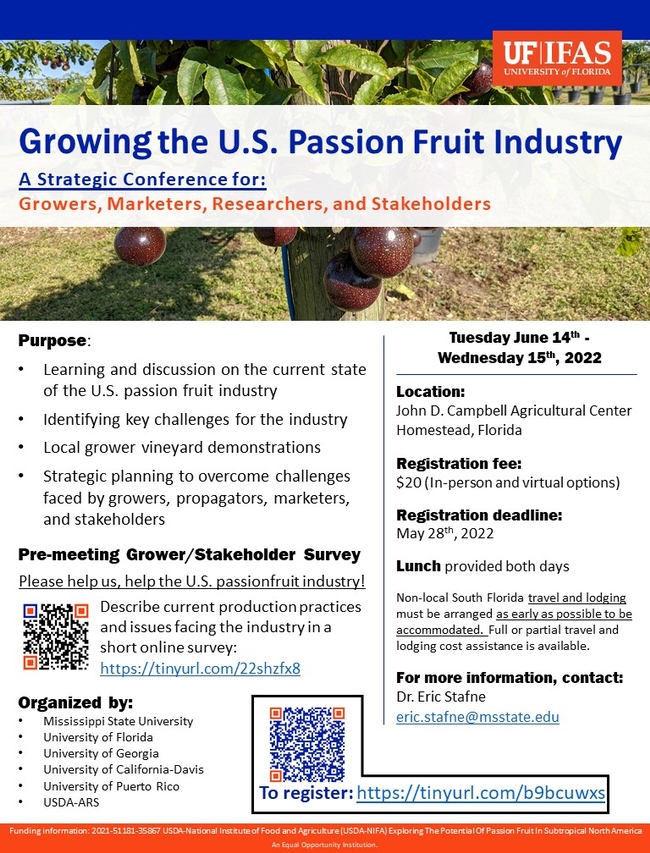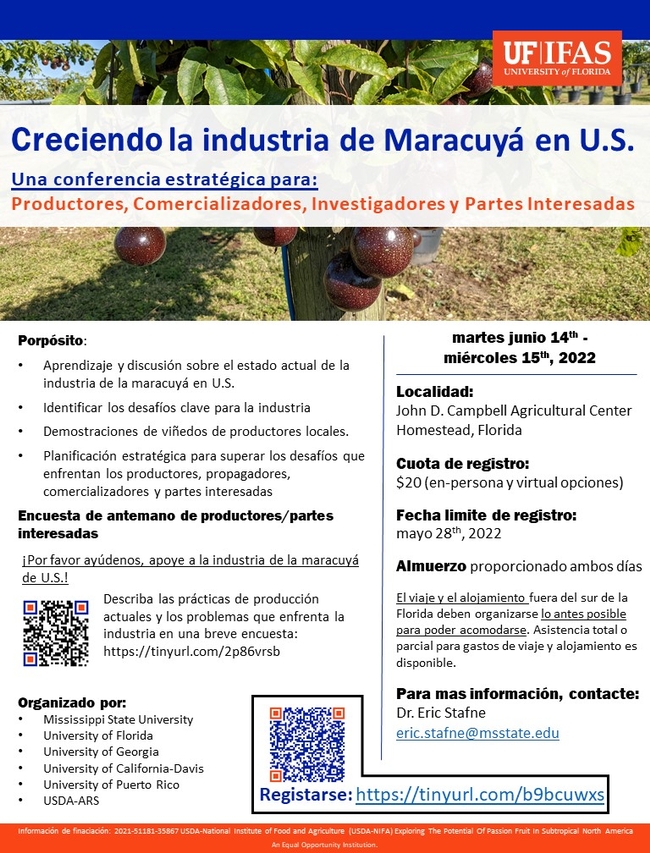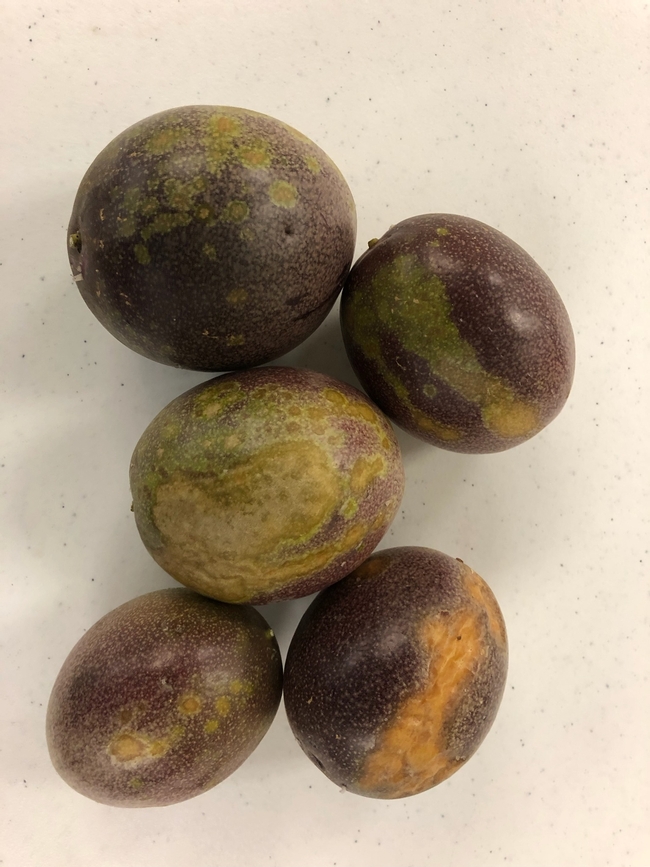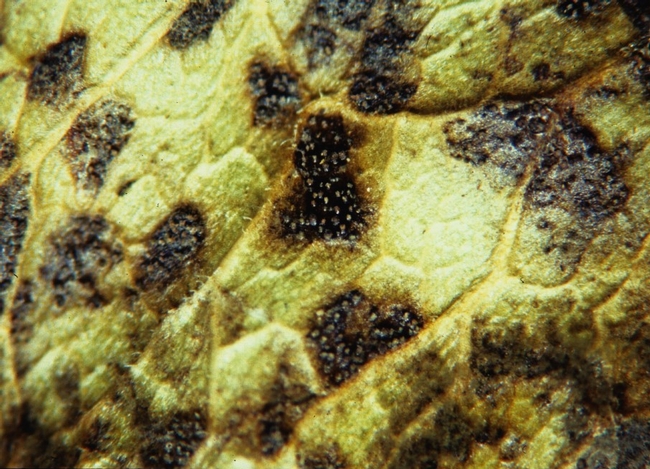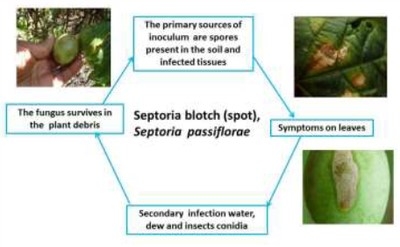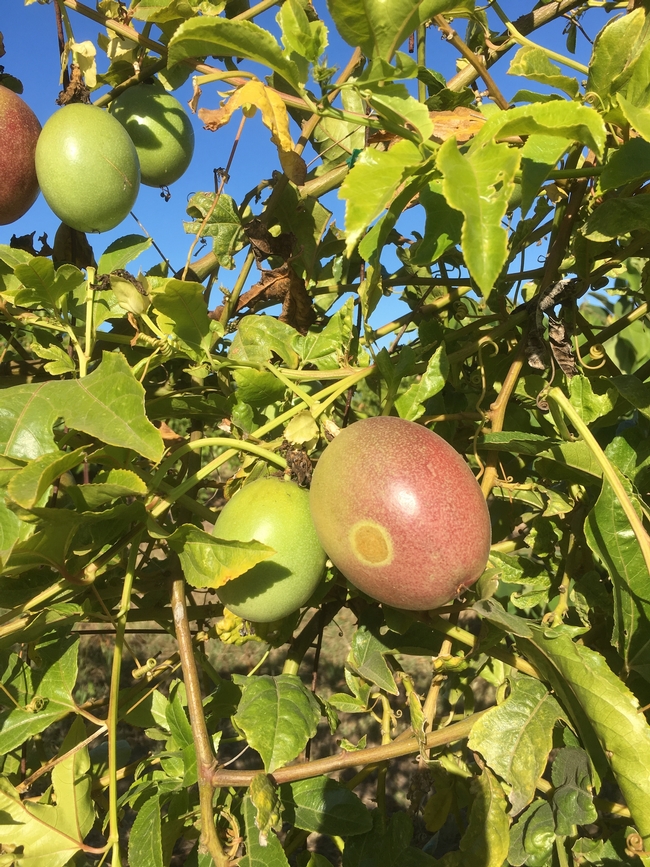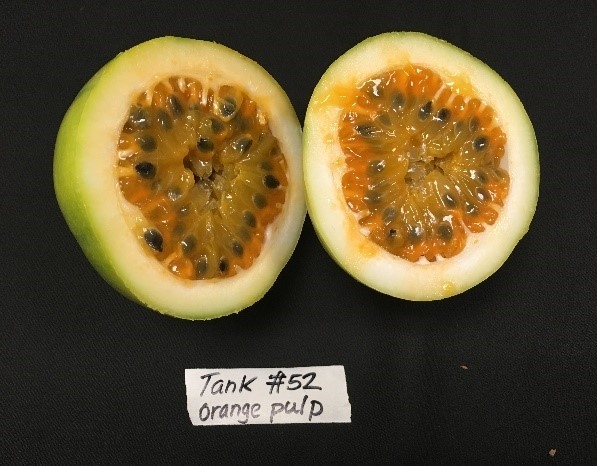
Posts Tagged: passion fruit
Passion fruit Conference
AGENDA
Day 1 |
June 14, 2022 |
|
8:30 AM |
Welcome, introductions, and objectives: Stafne (MSU) and Crane (UF) Charles LaPradd Agriculture Manager Miami-Dade County Department of Regulatory & Economic Resources |
|
9:00 AM |
Overview and discussion of stakeholder survey results: Downey (MSU) |
|
9:45 AM |
Coffee break (provided) |
|
10:00 AM |
Industry perspectives: presentations by marketing and shipping representatives addressing challenges and opportunities for the wholesale fresh-market and processing industries Johnny Hoblick -- AgriStarts |
|
11:00 AM |
Growers' perspectives: presentations about the biggest challenges and opportunities of the horizon Olga Farina (video) Ken Love |
|
12:00 PM |
Lunch (provided) Shiver's BBQ |
|
1:00 PM |
Field trip to local passion fruit producers Osvany Rodriguez Jackie Chen |
|
4:00 PM |
Reconvene group for discussion and recap |
|
5:00 PM |
End for day (dinner on own) |
|
Day 2 |
JUNE 15, 2022 |
|
8:00 AM |
Recap of day 1: Stafne (MSU) |
|
8:45 AM |
Breakout groups based on focus areas (breeding and genetics, pests and disease, production horticultural management, marketing, and extension) with industry stakeholders as available Breeding/Genetics – Josh Anderson/Manjul Dutt Pest/Disease – Romina Gazis/Daniel Carrillo/Dara Stockton Horticulture Production – Jonathan Crane Marketing – Trent Blare Extension/Education – Eric Stafne/Jeff Wasilewski Online – Laura Downey/Ben Posadas |
|
9:45 AM |
Coffee break (provided) |
|
10:00 AM |
Reports from first breakout groups to whole team |
|
10:45 AM |
Reconfigure breakout groups based on production region to allow participation by others in different focus groups |
|
12:00 PM |
Lunch (provided) TBA |
|
1:00 PM |
Reports from second breakout groups to whole team |
|
2:00 PM |
Group discussion on common ground and opportunities for an USDA-NIFA-SCRI SREP or CAP proposal |
|
3:00 PM |
Presentations on current research and extension efforts related to passion fruit
Tools to analyze your passion fruit enterprise's profitability, V. Contreras, University of Florida How to market in a digital era, T. Blare, University of Florida Seed Structure Differences and Genetic/Phenotypic Variability Amongst Colombian Accessions of Purple Passion Fruit, Passiflora edulis f. edulis N. Rodriquez, L. Melgarejo, D. Demissie, and M. Blair*, Tennessee State University. Status of conventional and organic pest control for U.S. passionfruit, J. Crane, University of Florida Passion Fruit Stem Canker, J. Anderson, University of Florida Establishing Gene Editing Technology to Generate Seedless Passion Fruit, E. Garcia, A. Chambers, and T. Liu, University of Florida Passionfruit pollination and pollinators, D. Carrillo, University of Florida Liliko'i (passion fruit) production in Hawai'I, K. Love, Hawaiian Tropical Fruit Growers |
|
4:00 PM |
Closing remarks and next steps: Stafne (UA) and Crane (UF) |
|
5:00 PM |
End of meeting |
NOT a New Disease of Passionfruit
Passion fruit is widely grown and valued throughout the tropics and subtropics. Most Passifloras are vines which can climb to 20 or 30 feet. The fruit varies in color from purple to yellow-orange and in shape from an egg to a tennis ball. Inside its quarter-inch protective rind are numerous small seeds covered by a juicy aromatic, sweet-acidic pulp. The sweeter species are esteemed as a fresh fruit. The seeds are consumed with the pulp. The fruit is more commonly made into juice and often blended with other juices such as orange. The fruit also is used to make excellent ice creams, sherbets, jellies, and pies. The downside of the passion fruit is that most esteemed species are very frost tender. The best adapted to California of the subtropical species, the purple granadilla (P. edulis), is prone to a fusarium soil disease. However, there is a yellow form which, though not as sweet, is not subject to this disease. More importantly, the yellow form can be hybridized with the purple or used as a rootstock. The crop grows mainly along the coast where it enjoys the mild weather.
The purple ‘Frederick' variety is probably the most widely grown commercial variety in California. It's great tasting, and I've been known to suck the delicious innards of 15 fruit at a sitting. Aside from fusarium wilt, it has few pests or diseases. That was until this fall when fruit spotting started showing up on fruit and leaves. The cause is a fungus – Septoria spp. – which thrives in cool, moist conditions. These were exactly what we had this year. All summer long, there was fog along the coast, and this is what the fungus enjoys. It colonizes leaves, defoliating the plant and spreading to the fruit, causing Septoria Blotch (Spot). Once infected there's not much that can be done, other than preventing further spread to the rest of the vineyard.
Photo: Fruit Blotch
Fungal structures (pycnidia) growing on leaf, causing scarring spots
Disease symptoms:
- Leaves are the most affected organs, showing light brown slightly round necrotic spots normally encircled by a chlorotic halo. A single lesion per leaf is sufficient to cause abscission, and even leaves without visible symptoms may fall prematurely.
- When the disease reaches 15-20% of leaves in the same plant, partial or even complete leaf abscission is observed. In young twigs, lesions may promote girdling leading to wilt and twig tips death.
- Lesions on flowers are similar to those on leaves. The primary infection in the calyx may reach the stalk, causing the early drop of flowers. The infection may occur at any stage of the development of the fruits, affecting maturation or development.
- Leaf and fruit abscission, twig wilt and plant death may occur under disease favoring conditions.
Treatment: Under ideal conditions and forehand knowledge!!!!
1) Rake up infected leaves on the ground and bury or compost more than 50 ft away from the vines.
2) Pick off spotted fruit and leaves and remove from field as soon as possible as spores are being produced in the lesions and can infect surrounding leaves and fruit when moisture is present.
3) During periods with dew, rain or ocean mist, spray Abound (azoxystrobin) or generic version of this fungicide on the vines. It distributes well over the foliage and fruit, is fairly rainfast, and gives about 2 weeks' protection.
4) To minimize the risk of the fungus developing resistance to Abound, apply a copper fungicide between Abound sprays, for instance Cueva (copper octanoate) is a good product and approved for organic production. Copper is a protectant and needs good coverage to be effective. It provides about 7 days of protection, possibly longer without rain.
So this year has been weird. Most years are. Lots of rain, no freezes, but it was a cold winter. Then all this fog in the summer that normally clears up going into summer. it seems like there's always something new. Had that funny scale on citrus again this year - wax scale - And the effects of fire can always bring a round of new pests. And there is always a new winter waiting for us.
Photo: Leaf and fruit spotting (blotch) from Septoria.
Tree & Vine Field Day on Crop Management and Salinity: Grapes, Avocado & Passion Fruit, a Potential New Crop
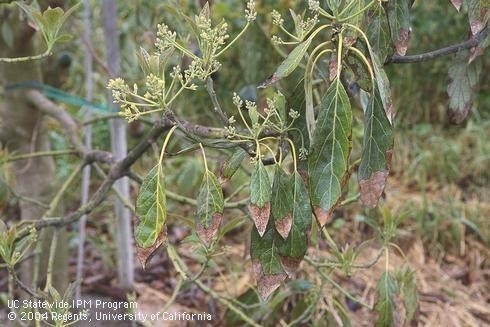
When: December 15, 2016
Where: USDA-ARS U.S. Salinity Laboratory - Loctated on UCR Campus 450 W. Big Springs Road, Riverside, CA 92507 https://campusmap.ucr.edu/
Time: Registration, light breakfast & coffee will be served at 8:00 AM, program from 8:30 – Noon
Cost: FREE Please register at : http://ucanr.edu/survey/survey.cfm?surveynumber=19550
Moderator: Sonia Rios, Subtropical Horticulture Farm Advisor, UCCE Riverside & San Diego Co.
Agenda:
8:30 AM – Welcome, Donald Suarez, U.S. Salinity Laboratory, Director
8:35 AM – “Management of avocado production in southern California” - Peggy Mauk Ph.D., Dir. of Agricultural 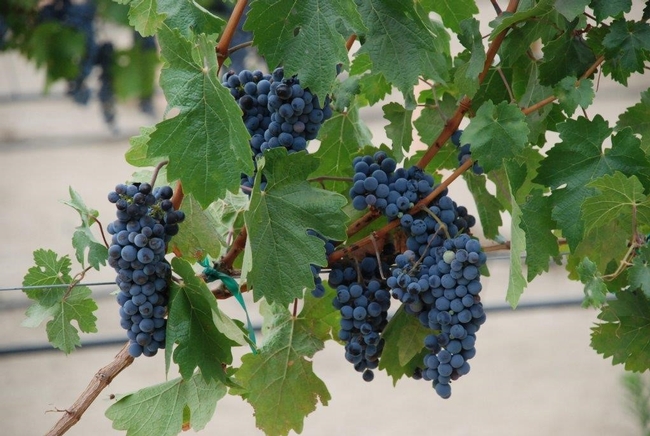
9:05 AM – “Avocado salinity management: Response of different rootstocks”- Donald Suarez Ph.D., USDA-ARS Salinity Laboratory Director
9:25 AM - “Grape Management in southern California - Carmen Gispert Ph. D. Area Viticulture Advisor, UCCE Riverside
9:55 AM – “Wine Grape production under saline conditions” - Donald Suarez Ph.D. USDA-ARS Salinity Laboratory Director.
10:10 AM - Break- light refreshments & snacks
10:30 – Noon - “Introducing Passion Fruit as a New Crop to Southern California- Cultural aspects and salinity effects” & Field Tour - Jorge Ferreira, Ph.D., Research Plant Physiologist, USDA-ARS, US Salinity Lab.
For more information, please Contact: Sonia Rios, UCCE Subtropical Farm Advisor: sirios@ucanr.edu
OR
Donald Suarez, USDA Salinity Laboratory Director: donald.suarez@ars.usda.gov, 951-369-4815
Passion Fruit
Passion fruit is widely grown and valued throughout the tropics and subtropics. Most Passifloras are vines which can climb to 20 or 30 feet. The fruit varies in color from purple to yellow-orange and in shape from an egg to a tennis ball. Inside its quarter-inch protective rind are numerous small seeds covered by a juicy aromatic, sweet-acidic pulp. The sweeter species are esteemed as a fresh fruit. The seeds are consumed with the pulp. The fruit is more commonly made into juice and often blended with other juices such as orange. The fruit also is used to make excellent ice creams, sherbets, jellies, and pies. The downside of the passion fruit is that most esteemed species are very frost tender. The best adapted to California of the tropical species, the purple granadilla (P. edulis), is prone to soil diseases. However, there is a yellow form which, though not as sweet, is not subject to these diseases. More importantly, the yellow form can be hybridized with the purple or used as a root stock. Marketwise, the United States can not compete in the production of passion fruit juice, and a demand for the fresh fruit has not been established except for a very limited gourmet business.
Botany
The family Passifloraceae contains about 550 species of which 400 are in the genus Passiflora. Of these all but about 40 are indigenous to tropical and subtropical America. They are commonly found as understory plants in rain forests. The passifloras are herbaceous and shallow rooted. Leaves are usually alternate. The leaf margin can be toothed or entire.
The unusual flowers are the outstanding characteristic of passifloras and many are grown only for their flowers. The flowers are bisexual, colorful, possessing a complex corolla, and a superior ovary on a gynophore. The flowers were named by missionaries who associated them with the Passion or suffering of Christ (the five petals and five sepals with the ten apostles, the corona with the crown of thorns, the five stamens with the five wounds, etc.).
P. edulis bears 2 to 3 inch spherical to ellipsoidal fruits. The fruits have a tough rind with a white pith adhering to the inside surface, about .3 inches in total thickness, and wrinkled when ripe. Inside is the edible portion consisting of many small black seeds on which adheres a juicy orange colored pulp. The flavor is highly fragrant, sub-acid to acid.
The P. edulis has a subspecies, yellow (P. edulis var. flavicarpa). The yellow form is more acid, less frost tolerant, and less prone to disease. In warmer climates the yellow will out-yield the purple, but this does not seem true with most areas in California.
Yellow and purple passion fruit flowers are perfect but self sterile and require insects to achieve fruit set. Flowers of the purple are self-compatible. They blossom in the spring and early summer. Pollen of the yellow will pollinate the purple, but not vice versa. The fruit of both ripen in 7 to 8 weeks.
Although there are many passiflora species that bear excellent fruit, the edulis is the only species that is sufficiently cold hardy to be grown outside of the banana belts in the milder areas of California. More cold hardy species do exist, but the fruit is not generally preferred to the edulis. Included here is a summary of the characteristics of the more important species:
- P. actinia (sea anemone)
Yellow, 1 inch ellipsoid, fragrant pulp
Can withstand 24oF
Potential rootstock for P. alta and P. quadrangularis
Fruit is at best equal to edulis
- P. alata (fragrant granadilla)
Yellow, 4 inch sphere, white pulp
Frost tender (35oF)
- P. coccinea (red granadilla)
Yellow-orange, 2 inch ellipsoid, white pulp
Amazon basin, frost tender
Often hand pollinated
- P. incarnata (maypop)
Makes good jams
Southeast US
Hardy to 10oF
- P. quadrangularis (giant granadilla)
Green-yellow to deep yellow, 5x10 inch ellipsoid
Yellow to pink pulp
Low elevations in tropics (1,500 to 5,000 feet)
Frost tender (30o - 31oF)
Often hand pollinated
Considered one of the better species
- P. ligularis (sweet granadilla)
Orange yellow, hard shell, 2x3 inch ellipsoid, yellow pulp
High tropics 3,000 to 8,000 feet
Considered one of the better species
Frost tender (30o - 31oF)
- P. laurifolia (water lemon, yellow granadilla, golden apple)
Orange yellow, 2x3 inch ellipsoid, white pulp
Low tropics
Very frost tender
Requires cross-pollination
- P. maliformis (sweet calabash)
Yellow-green, 1.5 inches spheroid, white pulp
Grows in high tropics
Frost tender 30oF
- P. mollissima (Tacsonia mollissima) (banana passion fruit)
Yellow, 2.5 inch banana shaped, good quality. white pulp
Andean valleys
Can survive 28oF
Planted in more frost prone areas of California
Climatic requirements
The purple edulis is native to southern Brazil, Paraguay, northern Argentina. This area has a humid, near-tropical climate. The yellow edulis subspecies is native to the Amazon basin and perhaps a hybrid of the purple and P. ligularis.
The optimal growing temperatures are 68 to 82 degrees. Passion fruit likes full sun along the coast, but inland full sun should be avoided since it does like hot, dry heat.
Soil Requirements
Passion fruit grow best in fast draining soils (sandy loam) with a pH 6.5 to 7. Drainage is particularly important for the purple subspecies since it is susceptible to soil diseases. Since the roots of plants are shallow, planting in raised beds can help provide the necessary drainage. The plants benefit from mulching.
Cultural Requirements
Spacing and training
Passion fruit are usually planted on 8 to 12 foot centers and trained on strong supports in a fashion similar to grapes. They are also cordoned on walls or flat trellises.
Watering
Passion fruit require a lot of water, particularly inland. However, careful attention must be paid to watering since overwatering can help further detrimental diseases and underwatering can leave the shallow roots too dry.
Fertilization
Passion fruit require frequent application of balanced fertilizer during growing season. In winter plants may be chlorotic (yellow between the veins of leaves) due to cold soil temperatures.
Pruning
Since the passion vines are vigorous growers, pruning is necessary to keep the plants to a desirable size, to remove tangles, and to remove deadwood. The plants are vigorous and can be pruned anytime; however, pruning just before spring flush is preferred.
Pests and Diseases
The purple passion fruit is subject to fusarium wilt, nematode attack, and crown rot and, therefore, may require replanting every 3 to 4 years. Planting on mounds or ridges is recommended for better drainage. Fungicide sometimes is used on the crown in wet season. The yellow form is resistant to wilt and nematodes and, therefore, is occasionally used as a rootstock for the purple; however, both are subject to Phytophthora cinnamoni. Other possible rootstocks worthy of trial for California are P. caerulea and P. coccinea. Snails will strip leaves if not controlled, and thrips can be a problem on seedlings.
Propagation
Plants can be propagated by seed; however, the progeny are variable. Fresh seeds are far easier to propagate than seeds that are older than a month or two. Seeds should not be exposed to light until they have germinated. Older seeds can be soaked in tea or coffee for at least one day to improve germination. Fresh seeds will germinate in 1 to 3 weeks; older seed may take months. Plants will bear in 2 or 3 years.
An easy method of propagation and one that will preserve characteristics of the parent is by rooted cuttings. Misting or enclosing in a humid atmosphere (a plastic bag enclosing a pot will do for an occasional rooting) improves the success rate. Grafting is also used to propagate purple passion fruit on disease resistant rootstock (P. flavicarpa).
Harvesting and Storage
Fruit can be harvested when it has turned from green to purple or yellow or allowed to drop if gathered from the ground daily. Unrefrigerated fruit will last 2 to 4 weeks, paraffin coated and refrigerated at 40o to 44oF it may be kept for more than a month.

passion fruit

